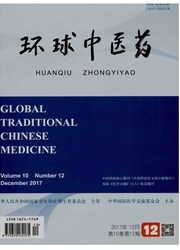

 中文摘要:
中文摘要:
利用中国知网、万方、维普、PUBMED数据库,系统检索自1949年至今,有关"十八反"中乌头与贝母反药组合同用的文献,检索文章的过程中剔除综述及临床研究类文章,选取实验研究方面的文章。初步认为乌头及其所属的炮制品与川、浙贝母各剂量组(接近临床成人用量的2~16倍)配伍;生草乌与浙贝母、制川乌与川贝母1∶1比例配伍的合煎剂均为实验的禁忌条件,制川乌与川贝母3∶1配伍、生川乌与浙贝母在1∶1~1∶13的区间内配伍的合煎剂为实验的可能适宜条件。笔者认为乌头与贝母能否同用不能一概而论,而是受到不同条件的限制。对乌头贝母这一反药组合配伍应进行多角度、多学科、多层次的探析,以期最终阐明乌头与贝母的配伍实质,为完善中药配伍理论和指导临床运用起到重要的理论意义和临床价值。
 英文摘要:
英文摘要:
This article summarized the suitable conditions and contraindicant conditions of antagonism compatibility aconite and fritillaryon from the selected experimental research articles by searching “aconite and fritillaryon compatibility” from Wan Fang, CNKI, and VIP database since 1949. It can be concluded that the compatibility of Sichuan fritillaria processed products and Zhejiang fritillaria of each dose group ( nearly 2 ~16 times the clinical adult dosage ): the contraindicant conditions: Raw aconitum and Zhejiang fritillaria,Sichuan fritillaria and Chuanwu with a 1:1 ratio of the compatibility; the suitable conditions:Baked Chuanwu and Sichuan fritillaria 3:1 compatibility,Radix Aconiti and Zhejiang Fritillaria 1:1~1:13 compatibility within the range of co-decoction may be appropriate for the conditions of the experiment. In my opinion that with the use of aconitum combined with fritillary can not be generalized, because is limited by different conditions. More researches should be done to get the essence of the two-contraindicated herbs so that improving the compatibility theory of traditional Chinese medicine and clinical value.
 同期刊论文项目
同期刊论文项目
 同项目期刊论文
同项目期刊论文
 期刊信息
期刊信息
